
How to Buy Affordable Art: An Artist's Expanded Guide to Finding Gems on a Budget
Dreaming of owning art but think it's too expensive? As an artist, I share my expanded guide to finding and buying affordable art without sacrificing quality or soul. Discover hidden gems, smart strategies, different art types, and how to build a collection you love on a budget.
How to Buy Affordable Art (Without Buying 'Cheap' Art): An Artist's Expanded Guide
Okay, let's be honest. When you picture buying art, maybe you imagine hushed auction houses, stern-faced collectors, and price tags with more zeros than your bank account has digits. It feels... inaccessible, right? Like it's a world reserved for the elite, the initiated, the people who wear turtlenecks unironically. I totally get that feeling; I've been there. I remember walking into a gallery once, feeling like I needed a secret handshake just to browse, the silence amplifying my imposter syndrome. It was intimidating, and for a long time, I thought art ownership was just not for me. Maybe you've felt that too? That little voice whispering, "Art's not for us." It's funny how those feelings can stick, isn't it?
I get it. As an artist myself, I've seen the high-end market. It's a different beast. But here's a little secret, one I live by: art doesn't have to be expensive to be meaningful, beautiful, or even original. You absolutely can buy art affordably, or even cheap (and I don't mean 'bad' cheap – I mean accessible in price, not lacking in quality or soul), and build a collection that speaks to your soul without needing a second mortgage. This isn't about finding mass-produced junk (unless that's your jam, no judgment!). This is about discovering genuine pieces, supporting artists, and bringing something unique into your space, all while being kind to your wallet. Think of it less like 'buying cheap art' and more like 'smart, affordable art collecting'. It's a treasure hunt, and the prize is something that makes your everyday life a little richer.
So, how do we navigate this world and find those hidden gems? How do we build a collection we love without breaking the bank? Let's dive in, leaving the hushed auction rooms and stern faces behind. We'll explore where to look, what types of art are accessible, and smart strategies for making purchases you'll cherish.
Why the Myth of Expensive Art Persists (And Why You Should Ignore It)
Why does the idea that all art is prohibitively expensive stick around? The art market is vast and complex. At the very top, yes, prices can be astronomical. You hear about record-breaking auctions, and it creates this perception that all art costs millions. But that's like assuming all cars are Ferraris because you saw one on TV. It's just the highly visible tip of a massive iceberg.
What drives those sky-high prices? Often it's a mix of the artist's fame and historical significance, the piece's provenance (its ownership history), market speculation, and demand from major institutions or ultra-wealthy collectors. Art also functions as a status symbol for some, a way to signal wealth and taste, which further inflates prices at the very top end. Media hype and the focus on 'masterpieces' in museums and auction houses also perpetuate the idea that this top-tier market is the entire art world. These factors create a tiny, highly visible peak of the art market iceberg.
Provenance, the documented history of who has owned a piece, is particularly important in the high-end market. It can verify authenticity, track a work's exhibition history, and significantly influence value. For affordable art, provenance might be simpler – perhaps just a Certificate of Authenticity directly from the artist or gallery. While you're not likely buying a piece with a history of being owned by royalty, understanding that provenance exists helps demystify why some pieces command such high prices. For affordable or emerging art, the artist is often alive and can directly verify the work, making extensive historical provenance less critical than for older, high-value pieces.
The art market can broadly be divided into the primary market (buying directly from the artist or their representing gallery) and the secondary market (buying from auctions, resellers, or other collectors). Affordable art is almost exclusively found in the primary market, where prices are set by the artist or their gallery based on factors like size, medium, complexity, and the artist's career stage, rather than speculative resale value.
The vast majority of artists in the world are not selling work for millions. They are working artists, often juggling their passion with other jobs, creating incredible pieces that are genuinely affordable. There is an immense volume of high-quality art being created globally that simply never enters the high-stakes auction circuit. The 'expensive art' narrative is just the tip of a very large, very diverse iceberg, and the good news is, the accessible part is huge! Trust me, as an artist, I know the reality for most creators is far from the auction headlines.
Your goal isn't necessarily to buy the next Picasso (though you can learn about him if you like!). Your goal is to find something you connect with, something that enhances your life and space. And that, my friend, is entirely achievable on a budget.
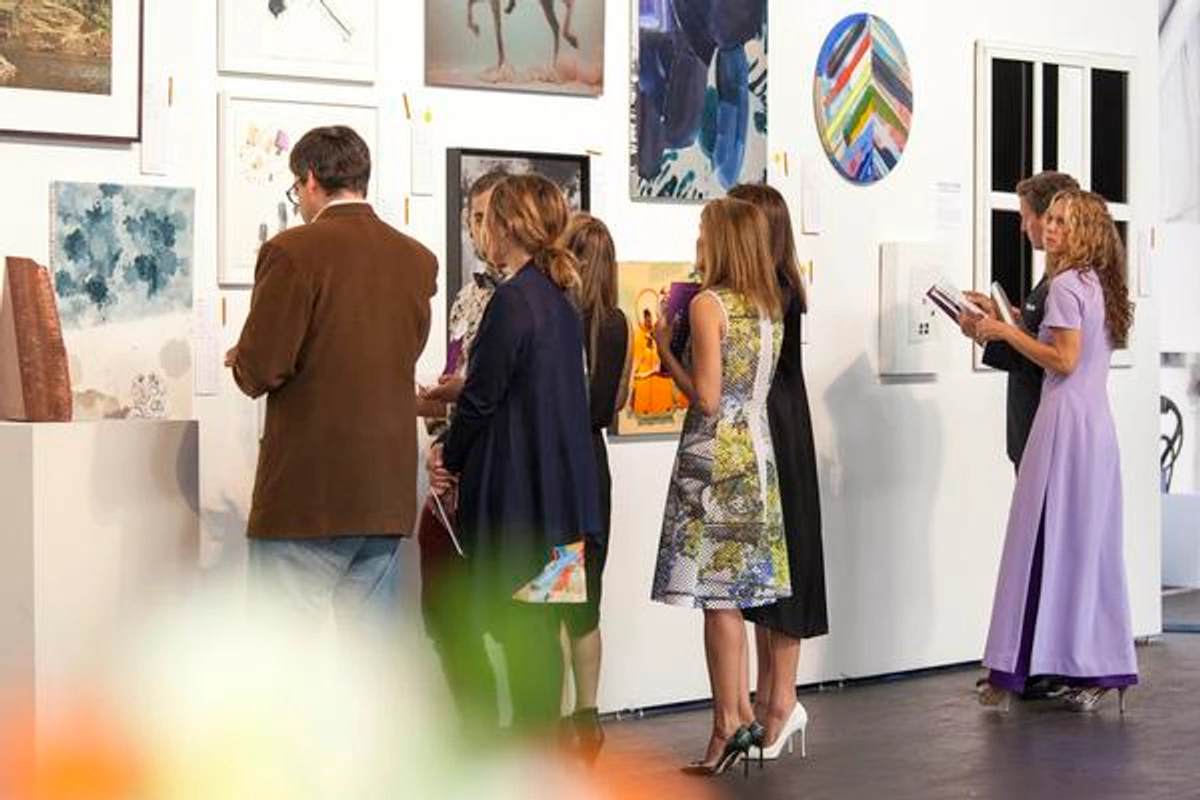
Your Hunting Ground: Where to Find Affordable Art
Ready to go treasure hunting? The good news is, the map to affordable art leads to some surprisingly cool places. Forget the big-name galleries (unless they have a specific affordable section or print shop). The real treasures for budget buyers are often found in less intimidating spots. Let's explore some prime hunting grounds, starting with the most accessible:
Location Type | Pros | Cons |
|---|---|---|
| Online Marketplaces & Artist Websites | Huge variety, easy to browse from home, direct interaction often possible, transparent pricing. | Can be overwhelming, quality varies, can't see in person (though good return policies help). |
| Unexpected Places (Cafes, Boutiques, etc.) | Easy discovery, supports local businesses/artists, low-pressure. | Limited selection, quality can vary. |
| Art Fairs & Open Studios | Direct artist interaction, wide variety in one place, often lower prices, fun atmosphere. | Can be overwhelming, requires being there in person. |
| Print Shops & Dedicated Print Marketplaces | Huge selection of prints, often high quality, clear categorization. | Less focus on original unique pieces, can still be overwhelming. |
| University Galleries & Student Shows | Extremely affordable, supporting young talent, unique finds. | Quality can vary wildly, less established artists. |
| Artist Collectives & Shared Studios | Diverse range of artists, direct interaction, relaxed atmosphere, support multiple artists. | Events might be less frequent, locations vary. |
| Local Galleries & Artist Studios | See art in person, support local scene, build relationships, discover artists early. | Selection might be smaller, can feel intimidating if new. |
| Charity Auctions & Benefit Sales | Support charity, potential for good deals, fun event. | Can be competitive, requires attending/bidding. |
| Auctions (With Caution!) | Potential for finding undervalued pieces. | Can be risky, requires knowledge, impulse buying easy, extra fees. |
| Estate Sales & Downsizing Collectors | Potential for unique finds, sometimes very low prices. | Condition can be poor, provenance might be unclear, requires luck and timing. |
| Art Consultants (Specializing in Affordable/Emerging) | Expert guidance, access to networks, saves time. | Fees can add up, finding the right fit is key. |
1. Online Marketplaces & Artist Websites
Your couch is now a gallery! This is probably the easiest starting point in the digital age. Platforms like Etsy, Saatchi Art (yes, they have affordable sections!), Artsy, Artfinder, and countless independent artist websites offer a direct line to creators. You can find everything from small original paintings to limited edition prints and open edition prints. It's a vast ocean, but with the right filters (price range, medium, subject, style) and a clear idea of what you're looking for, you can manage the overwhelm and find incredible pieces. Instagram is also a fantastic visual platform for discovering artists directly – just search relevant hashtags like #affordableart, #emergingartist, or #buyartonline. I've even sold pieces directly through Instagram DMs! It feels very personal.
I've written a whole guide on buying art online and even compared Etsy vs. Saatchi. It's a fantastic resource for getting started, especially if you're looking for where to find affordable original art online. Don't forget to check the artist's own website directly – sometimes they have pieces not listed elsewhere or offer slightly better pricing. Plus, buying direct often means more of the sale goes to the artist, which is always a good feeling.
2. Unexpected Places (Cafes, Boutiques, etc.)
Sometimes, art pops up where you least expect it. Local cafes, independent boutiques, pop-up shops, community centers, even local festivals and craft fairs often display and sell work by local artists. Independent bookstores, restaurants, and even some retail shops might feature local art. It's a casual way to discover art while you're out and about, and you might stumble upon something truly special. I once found a fantastic small ceramic sculpture in a little independent bookstore – completely unexpected! These places offer a low-pressure environment to browse and support local talent simultaneously. Keep your eyes peeled; art is everywhere! Check local event listings or community boards for informal art displays.
My guide on finding art in unexpected places explores this more.
3. Art Fairs & Open Studios
These events are goldmines for affordable art and offer a much more relaxed atmosphere than traditional galleries. Art fairs often have sections dedicated to smaller, more accessible works, and open studio events let you buy directly from the artist in their creative space. It's a chance to hear the story behind the work and often negotiate a little (politely!). Look for specific types of fairs like craft fairs with fine art sections, student art fairs, or regional art festivals, as these often prioritize accessibility. I've had some of my most memorable art purchases at open studio events, connecting directly with the creator and seeing their process firsthand. It feels much more personal. Plus, seeing where the magic happens adds another layer to the piece's story. Consider attending preview nights for a first look or the last day for potential deals.
My guide to visiting art fairs can help you navigate these events. Also, keep an eye out for visiting artist residency open studios – another great way to see work in progress and potentially buy directly.
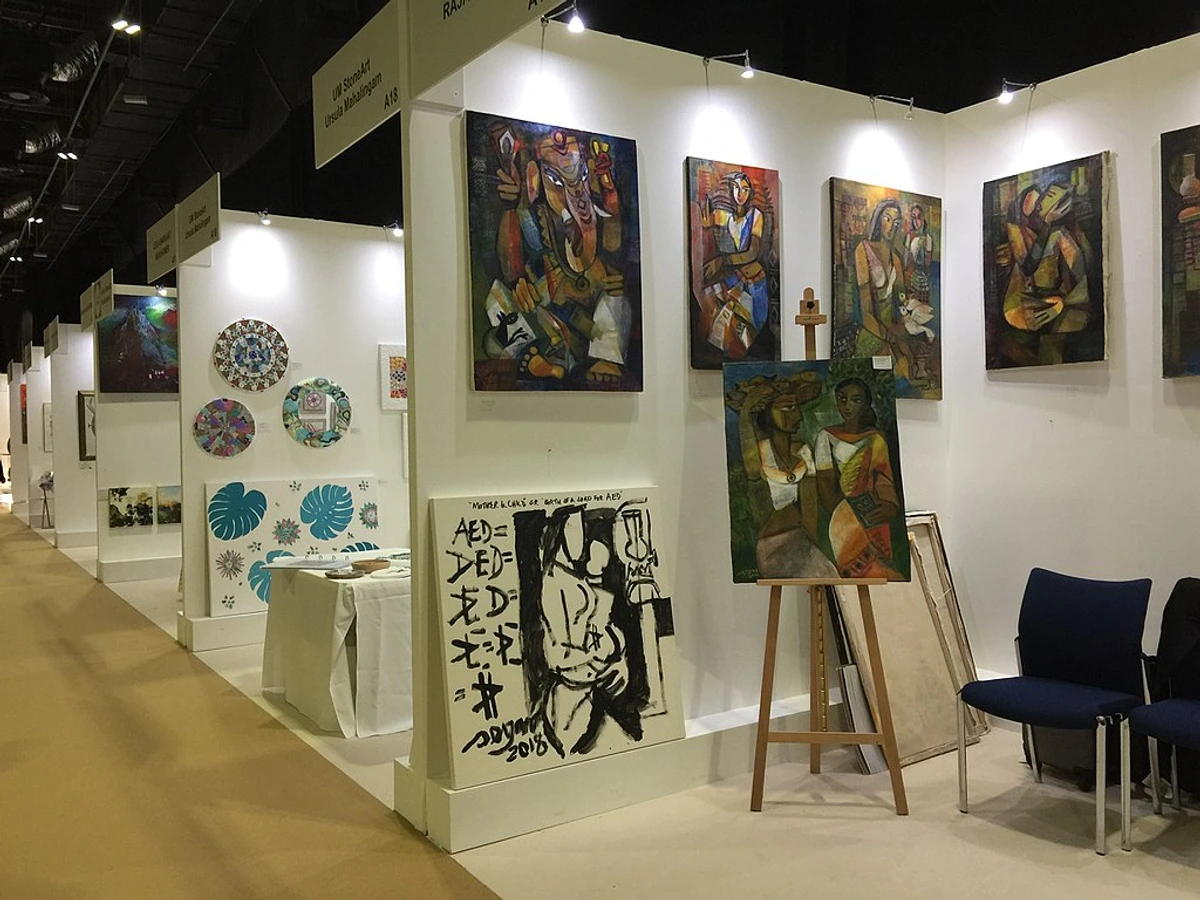
4. Print Shops & Dedicated Print Marketplaces
Beyond general online marketplaces, there are platforms and physical shops that specialize specifically in prints. These can be fantastic resources for finding high-quality, affordable editions by a wide range of artists, from well-known names offering open editions to emerging artists selling limited runs. Think of them as curated spaces just for prints. They often have excellent search filters based on style, subject, or price, making it easier to find what you're looking for. The curation often means a layer of quality control, as these platforms vet artists and print production.
5. University Galleries & Student Shows
Future art stars have to start somewhere! University art departments often have galleries showcasing student work, and end-of-year shows (especially BFA/MFA thesis shows) are prime opportunities to buy directly from students. Prices are typically very low, and you might just spot the next big thing. It's also a great way to support young talent at the very beginning of their journey. Follow local art schools or student groups on social media for announcements. I remember buying a small, vibrant abstract piece from a student show years ago, and it still brings me joy. It's a chance to get in on the ground floor and potentially own a piece by an artist whose career takes off. Don't overlook faculty exhibitions either; professors often sell work at accessible price points.
Don't overlook university art galleries as hidden gems.
6. Artist Collectives & Shared Studios
Many artists work together in shared studio spaces or form collectives. These groups often host joint open studio events or sales, providing a chance to see work from multiple artists in one visit. It's a great way to discover a variety of styles and connect with artists in a less formal setting than a traditional gallery. It's like a mini-art fair but often with a stronger sense of community and direct access to the creators.
Artist Collectives can be fantastic places to find unique pieces.
7. Local Galleries & Artist Studios
While online is convenient, don't overlook the magic of seeing art in person. Don't assume all galleries are high-end. Many local galleries, especially those focusing on emerging artists or contemporary local scenes, have pieces at accessible price points. Visiting a gallery is a wonderful experience – you get to see the art up close, feel its presence, and talk to gallerists who are passionate about their artists. It might feel a little intimidating at first, like walking into a quiet library, but remember, they want people to see and buy art! They're usually happy to chat, even if you're just looking. Plus, supporting your local art scene is incredibly rewarding. I've found some real gems just by walking into a small, unassuming gallery down a side street. Building a relationship with a local gallerist can also be invaluable; they can keep an eye out for pieces that fit your taste and budget. Check gallery websites or social media for specific exhibitions featuring smaller works or emerging artists.
Check out guides to local art galleries or best galleries for emerging artists in your area. And don't forget local art walks or gallery nights – these are often free, lively events where you can hop between multiple spaces in one evening, see lots of art, and mingle without pressure.
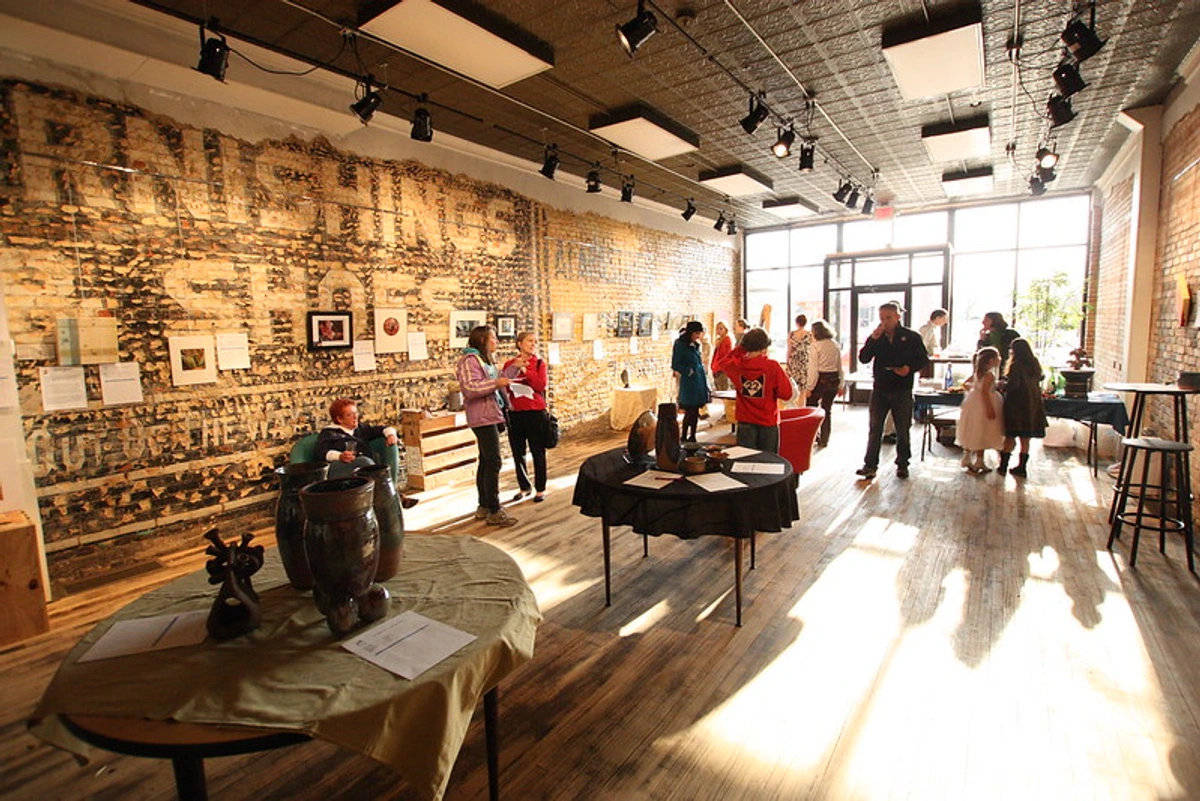
8. Charity Auctions & Benefit Sales
Many non-profits and arts organizations host auctions or sales to raise funds. Artists often donate work, and while some pieces might go for high prices, there are often smaller, more affordable works available. Plus, you're supporting a good cause! It's a win-win. Attending these can also be a fun social event and a great way to network with other art lovers and artists. You might even snag a piece below market value while contributing to something meaningful. Just remember to set a maximum bid beforehand to avoid getting caught up in the excitement and overspending.

9. Auctions (With Caution!)
While major auction houses deal in high-value art, smaller local auctions or online art auctions can sometimes yield affordable finds, especially for lesser-known or mid-career artists. However, this requires research and understanding the auction process. Be cautious of the 'buyer's premium' (an extra fee, often a percentage of the hammer price, added by the auction house) and the 'as is' nature of sales – you buy it as you see it, condition included. Impulse buying is easy here due to the fast pace and competitive atmosphere, so stick to your budget and research! It can be thrilling, but also risky if you're not prepared. Always inspect the piece carefully (or request detailed condition reports online) and factor in the buyer's premium and any potential shipping costs before bidding. Check the auction house's reputation carefully before participating. Be especially wary of online platforms that might lack rigorous vetting.
Read my ultimate guide to online art auctions before diving in.
10. Estate Sales & Downsizing Collectors
This is a bit of a wildcard, but estate sales, moving sales, or auctions from downsizing collectors can sometimes uncover hidden gems at surprisingly low prices. People selling off collections quickly might not realize the full value of certain pieces, or they might simply prioritize clearing space. The downside? Provenance might be murky, condition can be variable, and you need to be quick and knowledgeable. It's definitely a 'buyer beware' situation, but the thrill of the find can be immense. I've heard stories of incredible pieces found this way, though I haven't personally had such luck... yet! If you find something interesting, look for signatures or any identifying marks and take photos to research later if you can't do it on the spot.
11. Art Consultants (Specializing in Affordable/Emerging)
If you're short on time or feel overwhelmed, consider working with an art consultant who specializes in placing affordable art or working with emerging artists. They have networks and expertise to find pieces that fit your taste, space, and budget. Their fees vary, but for some, the guidance and access they provide can be well worth the cost. Just make sure you find one whose aesthetic aligns with yours and who understands your budget constraints. Don't hesitate to ask for references or examples of previous placements within a similar budget range.
Exploring Different Types of Affordable Art
Original paintings and sculptures are often the most expensive, but they are far from the only way to own art. Exploring different mediums and formats can open up a world of accessible options. Let's look at some types you might consider, exploring options beyond traditional paintings:
Art Type | Medium/Format | Typical Price Range (Affordable) | Uniqueness |
|---|---|---|---|
| Prints (Open Edition) | Giclée, Lithograph, Screen Print, etc. | $50 - $200+ | Unlimited quantity, often unsigned. |
| Prints (Limited Edition) | Giclée, Lithograph, Screen Print, Etching, Woodcut, Linocut, etc. | $200 - $2000+ | Fixed quantity, signed and numbered. |
| Photography & Digital Art Prints | Photographic prints, Digital illustrations (as prints) | $100 - $1000+ (often in editions) | Can be unique (rare), often in editions. |
| Works on Paper | Drawings, Watercolors, Sketches | $100 - $2000+ | Unique originals. |
| Smaller Sculptures & Ceramics | Wood, Resin, Ceramic, Glass | $200 - $2000+ | Often unique or in small editions. |
| Mixed Media & Collage | Combinations of materials | $200 - $2000+ | Inherently unique. |
| Textiles & Fiber Art | Woven pieces, Fiber sculptures, Embroidery, Quilting | $100 - $1500+ | Can be unique or in editions. |
| Artist Books & Zines | Small, self-published books | $10 - $100+ | Often limited runs, but focus is on content/form, not investment. |
| Artist Multiples | Small objects, sculptures | $50 - $500+ | Produced in editions. |
When considering different types, also think about the artist's process and the materials used. A highly detailed etching might take weeks of meticulous work, while a large abstract painting might be created in a few intense days. Neither is inherently 'better,' but understanding the labor and skill involved can help you appreciate the price point. Quality materials, like archival paper or lightfast pigments, also contribute to the longevity and value of a piece, even an affordable one.
1. Prints, Editions, and Posters
High-quality prints offer a way to own a piece by an artist you admire at a fraction of the cost. Types include:
- Giclée: High-quality inkjet print, often on archival paper.
- Lithograph: Print from a stone or metal plate, known for rich tones.
- Screen Print: Ink pushed through a screen, creating bold colors and textures.
- Etching: Image incised into a metal plate.
- Woodcut: Image carved into a block of wood.
- Linocut: Image carved into linoleum.
Each technique offers a unique aesthetic quality. Limited editions (signed, numbered, fixed quantity) are generally more valuable than open editions (unlimited quantity, often unsigned), but both are great options for affordable collecting. A limited edition print, while a reproduction, is still considered collectible art, distinct from a mass-produced poster you might find in a gift shop (which is typically unsigned, unlimited, and often printed on lower-quality paper). It's part of a specific, controlled run created by or authorized by the artist. You might also encounter artist proofs or printer's proofs, which are prints outside the main numbered edition, often kept by the artist or printer, and can sometimes be available for purchase. It's also worth noting the difference between a print that is hand-signed by the artist and one where the signature is part of the printed image itself – the former generally holds more value and confirms the artist's direct involvement with that specific print. As an artist who sells prints myself, I can tell you that creating a beautiful, high-quality print involves its own set of skills and decisions, from choosing the right paper to overseeing the printing process. It's a way to make my work accessible to more people, and I put just as much care into them as my originals. The paper or medium the print is on (e.g., archival paper, canvas, metal) significantly impacts its quality and price.
Learn more about buying art prints or the difference between prints vs paintings. If you're wondering why buy art prints, the affordability and accessibility are key reasons! You can also dive deeper into Giclée vs. Lithograph vs. Screen Print.
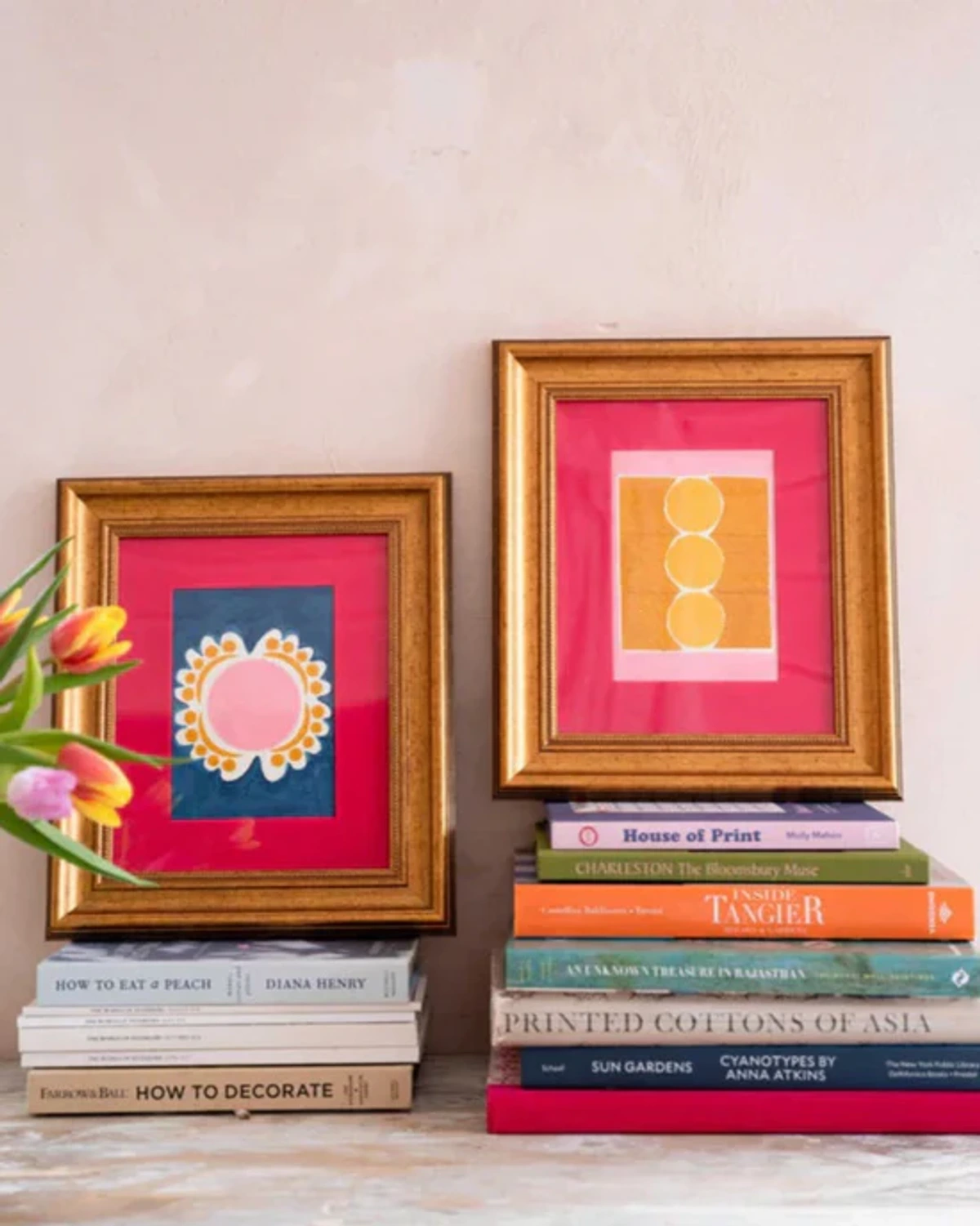
2. Photography and Digital Art Prints
Similar to other print types, photography and digital art are often available in editions, making them more accessible than unique physical objects. You can find stunning photographic prints or digital illustrations printed on various media at various price points, from emerging artists to established names offering open editions. This is a fantastic avenue for building a collection with a modern feel. The quality of digital printing has become so sophisticated that photographic prints can have incredible detail and depth. Many digital artists also offer limited edition prints of their work, providing a collectible option. When buying, pay attention to the print medium and paper quality, as these significantly impact the look, feel, and longevity of the piece. Are they printed on archival paper? Is it a metallic print? These details matter. Also, understand the edition size for digital art, as it can vary widely and impacts value/collectibility.
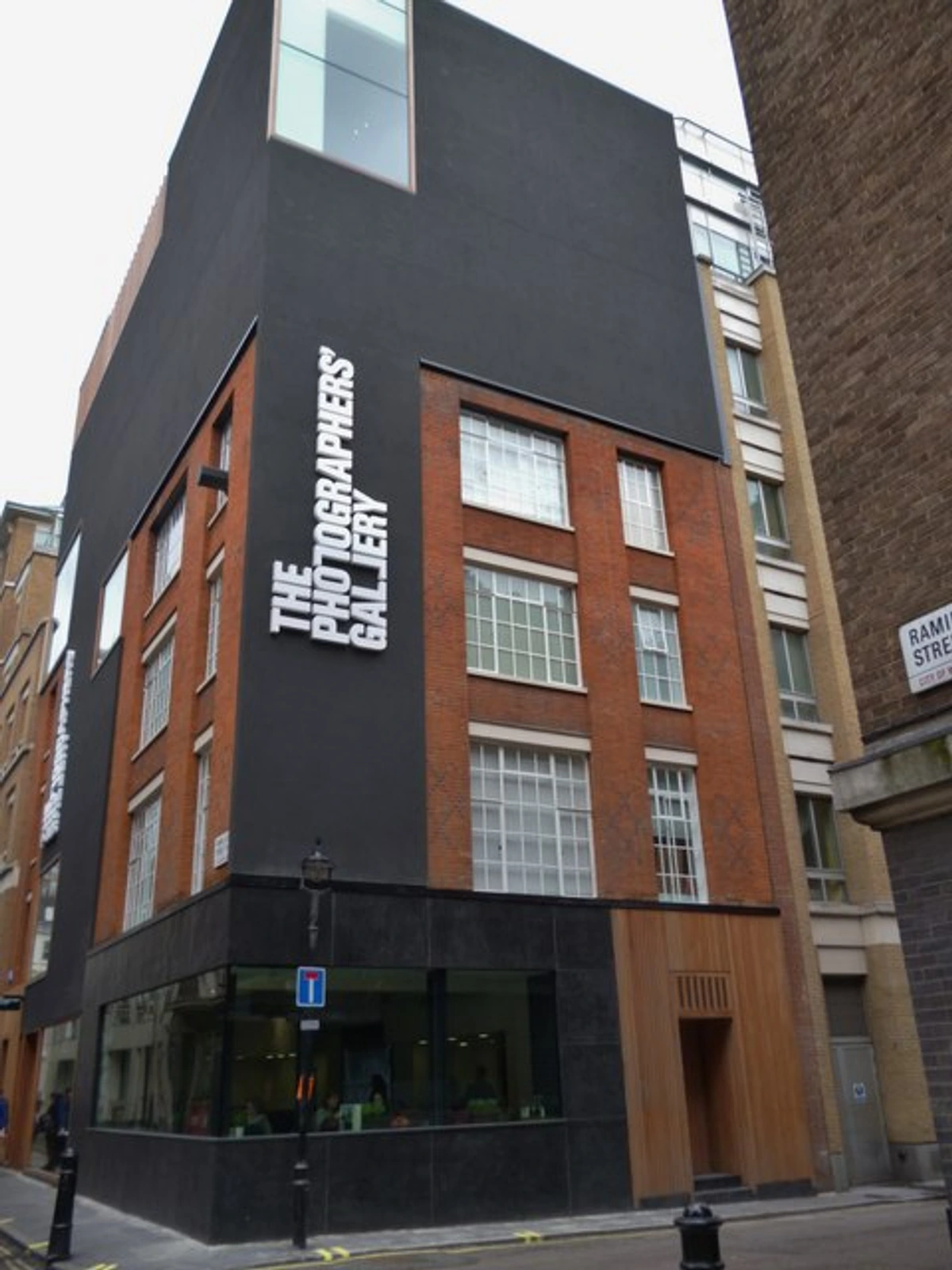
3. Works on Paper
Drawings, watercolors, sketches, and other works created on paper are often less expensive than paintings on canvas or panel. They offer a direct glimpse into the artist's hand and process. Collecting drawings and sketches can be a deeply personal way to connect with an artist's work. I love the immediacy of working on paper myself; it feels raw and direct. You see the initial ideas, the energy of the line, the subtle washes of color. These pieces can feel incredibly intimate and offer a different kind of connection than a finished painting. Examples include charcoal drawings, ink sketches, or pastel studies. However, works on paper are particularly fragile and susceptible to damage from light, humidity, and improper handling, so proper framing with archival materials and UV-protective glass is essential for preservation. Don't skimp on the framing for these!
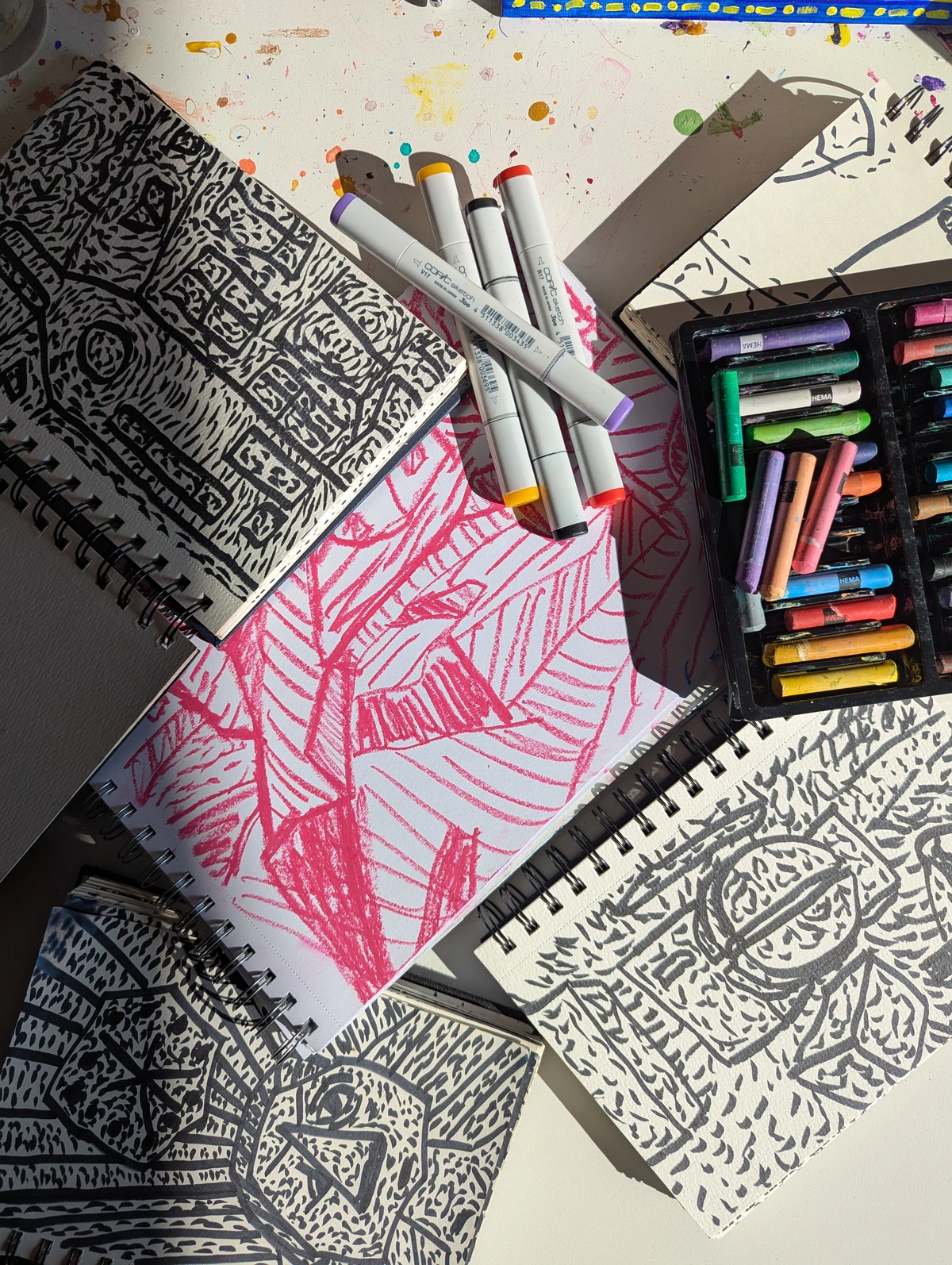
4. Ceramics, Glass, and Smaller Sculptures
Three-dimensional art doesn't have to mean monumental bronzes. Smaller ceramic pieces, blown glass, or sculptures in materials like wood or resin can be surprisingly affordable and add unique texture and form to your space. I've always been drawn to the tactile nature of sculpture – the way light hits the form, the weight of the object in your hand. A small, interesting sculpture can completely change the feel of a corner or a bookshelf. Look for unique handmade ceramics at local craft fairs, specialized ceramics/glass studios, or online marketplaces. Small glass pieces can catch the light beautifully. These pieces add a different dimension to your collection. Consider looking at craft galleries or specialized studios in addition to general art venues.

5. Mixed Media & Collage
Artworks that combine multiple materials – paint, paper, fabric, found objects – can offer incredible visual depth and texture. Mixed media and collage art often allow artists to work with less expensive materials, which can translate to more accessible price points for buyers. These pieces are inherently unique and can bring a dynamic energy to a space. I find the process of collage fascinating, bringing disparate elements together to create a new narrative. They often have a wonderful layered quality and can incorporate interesting textures and patterns. Just be mindful of the materials used and ensure they are stable and properly adhered for longevity. These mediums offer potential for unique textures and dimensionality.
![]()
6. Textiles & Fiber Art
From intricate tapestries and woven pieces to contemporary fiber sculptures, textile art is a growing and often more affordable area of collecting. Artists working with textiles bring a different kind of warmth and texture to their work, and you can find everything from small decorative pieces to larger wall hangings at various price points. Consider embroidery, weaving, quilting, or soft sculpture. The rise of textile art is definitely something to watch. I've seen some incredible contemporary textile pieces that completely challenge what you might expect from the medium. They can add a soft, tactile element to a room and often have a wonderful handmade feel. Be sure to ask about care instructions, as textiles can be susceptible to dust, pests, and light damage.
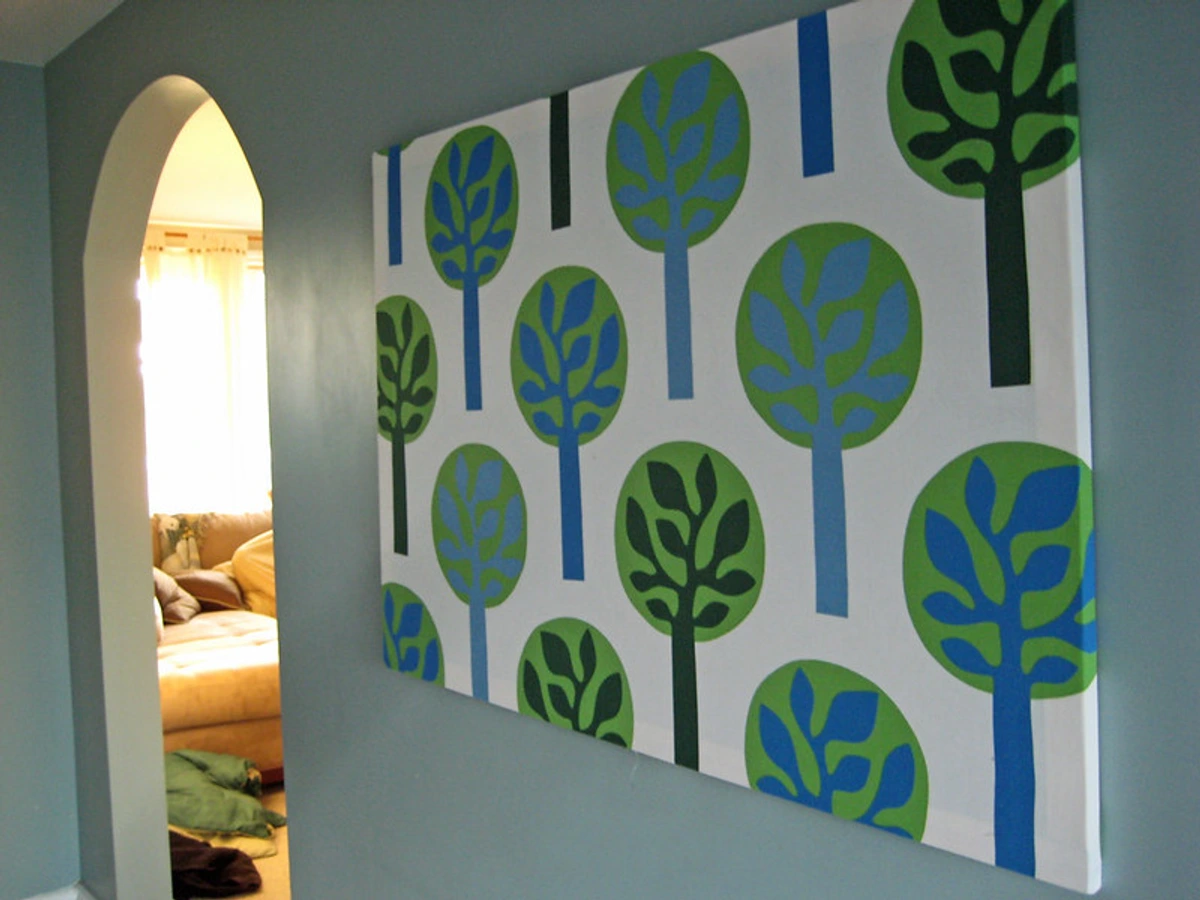
7. Artist Books & Zines
For a truly accessible entry point, consider collecting artist books or zines. These are often small, self-published works that showcase an artist's ideas, sketches, or smaller prints in a book format. They offer a tangible piece of the artist's world at a very low cost and can be fascinating objects in themselves. Think of them as miniature, collectible exhibitions. They are a great way to support an artist directly and own a piece of their creative output, even if it's not something you'll hang on the wall. Look for these at independent bookstores, comic shops, or zine fairs.
- Pros: Very affordable, intimate glimpse into artist's process/ideas, easy to store and display.
- Cons: Not typically wall art, value appreciation is rare.
8. Artist Multiples
Artist multiples are editions of small, three-dimensional objects or sculptures produced by an artist. Unlike unique sculptures, these are made in limited or open editions, making them much more affordable. They can range from small ceramic objects and resin figures to cast metal pieces or even functional items like mugs or plates with the artist's design. They offer a way to own a piece of the artist's sculptural or design work without the price tag of a one-of-a-kind piece. Concrete examples include limited edition toys, designer objects, or small cast sculptures.
Learn more about types of artwork.
Smart Strategies for Buying Art on a Budget
Finding affordable art is one thing; buying it wisely is another. Now that you know what types of art are accessible, here are a few tips to make sure you make purchases you'll love for years, not just impulse buys you regret later:
Before You Start Looking
- Set a Budget (and Stick to It): My absolute golden rule, the one I live by both as an artist and a buyer, is: Decide beforehand how much you're willing to spend. This helps narrow your search and prevents impulse buys you might regret. It's okay if your budget is $50 or $500 – there's art out there for you. Don't feel pressured to spend more than you're comfortable with. A good starting budget is entirely personal, but to give you a rough idea, you can often find high-quality open edition prints for $50-$200, limited editions might start around $200-$500, and small original works on paper or canvas by emerging artists could range from a few hundred to a couple of thousand dollars. Just start looking within your comfort zone! Remember to factor in potential shipping costs and sales tax, especially when buying online or from out-of-town sources.
- Buy What You Love: This is the most important rule, especially when buying affordable art. Don't buy something just because you think it might be worth something someday (though you can learn about art as an investment). Buy it because it resonates with you, makes you feel something, or simply makes your space happier. As an artist, I can tell you, knowing my work resonates with someone is the greatest reward, far beyond the price tag. My guide on what art should you buy focuses on this connection. Trust your gut feeling; if a piece speaks to you, that's its true value. This is about personal enjoyment and connection, not primarily financial gain. Ask yourself why a piece resonates – what emotions does it stir? What memories does it evoke?
- Define Your Style & Space: Think about your personal aesthetic. What colors, styles, or subjects are you drawn to? Consider where the piece will go. How big is the wall? How will it relate to the furniture and other decor in the room? A small piece might get lost on a large wall, while an oversized piece might overwhelm a small space. Smaller works are often more affordable, making them a great starting point. Consider how the art will fit into your overall interior decorating plan. Sometimes a collection of smaller pieces can make a bigger impact than one large one. Measure your space beforehand or even use masking tape on the wall to visualize the size. Creating a mood board can be incredibly helpful here. Take photos of your space or the wall you plan to hang art on when you go shopping to help visualize.
During Your Search & Purchase
- Do Your Research: Even for affordable pieces, learn a little about the artist. What's their background? Where else is their work shown? Have they had any exhibitions or press mentions? This adds to the story of the piece and helps you understand their journey. It also helps you gauge their career trajectory if you're interested in potential value. Look for consistency in their work and pricing across different platforms or galleries as a sign of professionalism. My guide on researching artists can help. Look at their website, social media, and any articles or interviews about them. Sometimes, the artist's personal narrative or the inspiration behind the work adds immense value and meaning to the piece, even if the price is low. Attending artist talks or following their process online can deepen this connection before you buy. Look for their exhibition history, even small local shows, as a sign of their active practice.
- Consider the Story: Beyond the artist's background, what is the story behind this specific piece? What inspired it? What was the artist thinking or feeling when they created it? Knowing the narrative can deepen your connection and appreciation for the work. Don't be afraid to ask the artist or gallerist about it. This is where the 'soul' of the art often lies. Ask about their process or techniques – this can also add depth to the piece's story.
- Read the Artist Statement and Bio: Many artists provide a statement about their work and a short biography. Reading these can offer valuable insight into their themes, process, and background, deepening your connection to the art and the person who created it. It's like getting a little window into their creative world. Learning how to deconstruct an artist statement can be a useful skill. Look for consistency between the statement/bio and the actual artwork.
- Consider Material Quality: Even at affordable price points, the quality of materials matters for the longevity of the artwork. Ask about the materials used – are the pigments lightfast? Is the paper archival and acid-free? Is the canvas properly prepared? Using quality materials indicates the artist's commitment to their craft and helps ensure your piece will last. This is especially crucial for works on paper and textiles. Poor material quality, like non-archival paper, can yellow over time, and non-lightfast pigments can fade in sunlight.
- Check the Condition: Especially if buying older pieces, or from less traditional sources like auctions or vintage shops. Look for damage, fading, or signs of poor handling. Don't be afraid to ask questions about its history. This is crucial for preserving your piece. For paintings, check for cracks, tears, or flaking paint. For works on paper or prints, look for creases, tears, water damage, or foxing (brown spots). For sculptures, check for chips, cracks, or instability. For textiles, look for pulls, stains, or signs of insect damage. If buying from an unexpected place like a flea market, be extra vigilant about condition and authenticity. I once bought a print that looked fine at first glance, only to realize later it had significant water damage hidden by the frame – a lesson learned the hard way! A reputable seller will be transparent about the condition. If buying online, ask for additional photos or a video call, especially for older or delicate pieces.
- Ask About Provenance & Documentation: For prints or originals, ask for a Certificate of Authenticity (COA). This documentation adds to the piece's story and can be important later, even if you're not buying for investment. It confirms the work is what the artist or seller claims it is and typically includes the artist name, title, medium, dimensions, edition size (if applicable), date, and artist signature. Even for a $100 print, knowing its origin adds to its story and confirms it's a legitimate piece from the artist's hand or authorized edition. It's like the artwork's birth certificate and family tree rolled into one! For very affordable pieces directly from the artist, a simple signed receipt or note on the back of the piece might suffice as basic documentation. I listed 10+ questions to ask before buying.
- Don't Be Afraid to Ask Questions: Ask about the medium, the artist's process, the inspiration, the provenance (where it came from). A good artist or gallerist will be happy to share. If they seem dismissive, that's a red flag. Remember, there's no such thing as a stupid question when you're making a purchase you care about. As an artist, I love when people ask about my work – it shows genuine interest! It's a chance to connect with the creator and the piece on a deeper level. For example, you could ask, "What inspired the colors in this piece?" or "Could you tell me a bit about the technique you used here?"
- Consider Payment Plans: Some galleries and artists offer payment plans, allowing you to spread the cost of a slightly more expensive piece over time. Don't be shy about asking! It's a common practice and can make a piece you truly love more accessible. I covered this in my guide on negotiating art payment plans. It's a great way to acquire a piece that might be just outside your immediate budget. This is more common for pieces in the mid-hundreds to low thousands range, rather than very low-priced items.
- Understand the Ethics: When buying art, especially from emerging or local artists, consider the ethics of the purchase. Is the price fair for the artist's time, materials, and skill? Are you supporting them directly or is there a middleman taking a large cut? Buying directly from an artist often means more of the money goes to them, but galleries provide valuable services like promotion and sales. There's no single right answer, but being mindful of how your purchase impacts the artist is part of being a thoughtful collector. Briefly, consider the concept of artist resale rights (less common in the US, but relevant globally) or the importance of not asking for excessive discounts that devalue the artist's work.
- Watch Out for Red Flags: Be wary of suspiciously low prices for works by established artists (could be fakes or reproductions misrepresented as originals). Be cautious if a seller is overly pushy or rushes you. Always get documentation. If buying online, check reviews and return policies. Trust your gut – if something feels off, it probably is. A red flag for online sales could be poor communication, a lack of a clear return policy, or generic-looking artist profiles.
After You Buy
- Factor in Framing & Installation: A cheap piece can look like a million bucks with the right frame. Conversely, an unframed piece might look unfinished. Remember to budget for this. Framing can sometimes cost as much as or more than the artwork itself, especially for custom jobs. But it's an investment in how the piece is presented and preserved. Proper framing, especially with archival materials (like acid-free mats and backing) and UV-protective glass, is essential for protecting works on paper and photographs from damage and fading over time. For affordable options, consider buying standard-sized art that fits readily available frames, looking for second-hand frames at antique shops or online, or exploring budget-friendly online custom framers. Installation is also key – make sure it's hung securely and at the right height. Guides on framing your artwork or hanging art can be useful. Consider clip frames or simple poster frames for very low-budget options, while still emphasizing the benefits of proper framing for preservation.
- Be Mindful of Storage and Handling: Once you own a piece, especially works on paper, photographs, or delicate sculptures, proper storage and handling are key to preserving it. Avoid touching the surface, keep it away from direct sunlight and humidity, and use archival materials for framing and storage. This is an often-overlooked part of affordable collecting! For instance, never roll an unframed print unless absolutely necessary for transport, and always use archival sleeves or folders for storage. Temperature and humidity control are also important for long-term preservation. When handling unframed prints or photographs, consider wearing clean cotton gloves to avoid transferring oils from your skin. Use acid-free tissue paper when storing unframed works on paper. My guide on how to take care of your art is essential reading.
- Consider Lighting: Good lighting can dramatically enhance the appearance of your art, bringing out colors and textures. You don't need expensive gallery lighting; simple track lighting or directional spotlights can make a big difference. Be mindful of the type of light (avoiding harsh direct sunlight, as mentioned above) and how it interacts with the piece at different times of day. Suggest using LED bulbs with a high Color Rendering Index (CRI) to accurately represent the artwork's colors.
- Factor in Shipping Costs: If buying online or from a distant location, shipping can add a significant amount to the total cost, especially for larger or fragile pieces. Always get a clear quote for shipping and insurance before committing to a purchase. My guide on art shipping costs can help you understand what to expect. Ask if the artist/gallery offers local pickup if you are nearby.
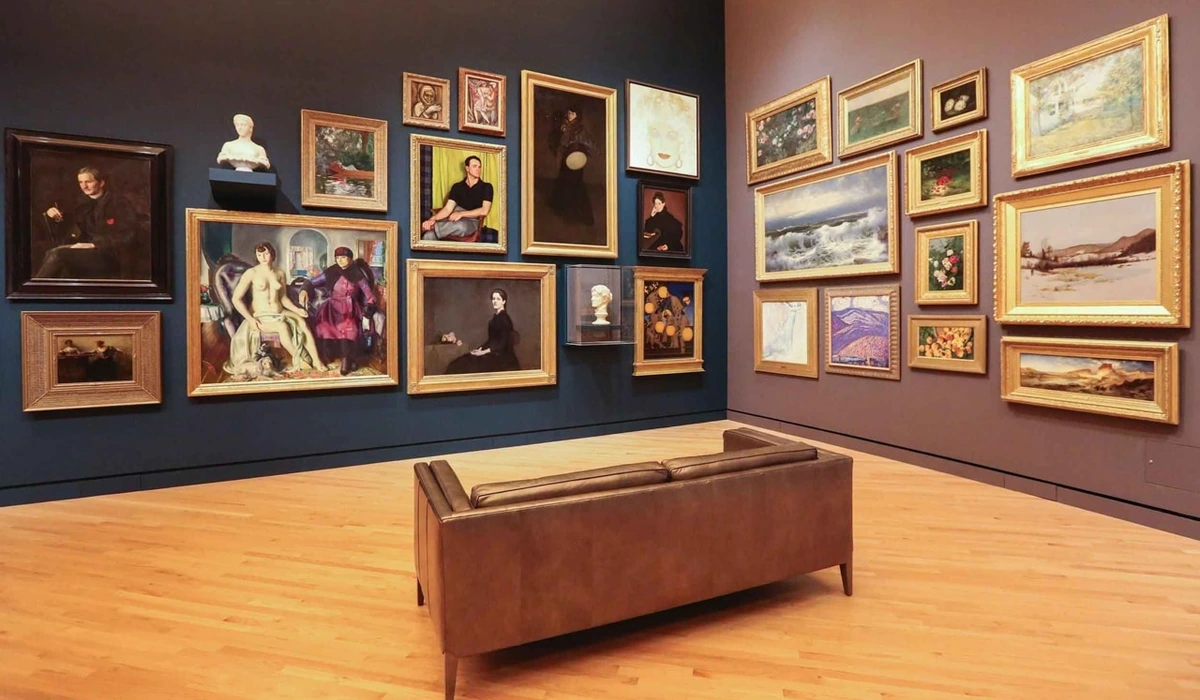
Discovering Artists You Love
Finding affordable art is also about finding artists whose work speaks to you. Beyond visiting galleries and fairs, here are some ways to discover new talent and build connections:
- Follow Curators and Art Blogs: Many curators and art writers have their finger on the pulse of the emerging art scene. Follow them on social media or read their blogs for insights and recommendations. They often highlight artists who are gaining traction but might still be accessible. Consider following art critics or local art journalists.
- Explore Online Platforms: Websites like Artsy, Artfinder, and even Instagram (using relevant hashtags like #emergingartist, #affordableart, #buyartonline) are great for browsing and discovering artists directly. Spend time scrolling, save pieces you like, and follow the artists whose work resonates. This is also where you can often find artists selling directly. Don't hesitate to interact with artists on social media – ask questions about their process, comment on their work, and build a rapport. It's a great way to connect before potentially buying. Consider using Pinterest or Tumblr as visual discovery tools.
- Visit Art School Websites & Shows: As mentioned earlier, university art departments are breeding grounds for new talent. Check their websites for student showcases, faculty exhibitions, or alumni features. Attending student shows is a fantastic way to see fresh, often experimental work at very low prices. Faculty exhibitions can also offer accessible pieces. Emphasize looking for BFA/MFA thesis shows specifically.
- Attend Artist Talks and Studio Visits: If an artist you admire is giving a talk or hosting a studio visit (often announced via galleries, newsletters, or social media), go! It's an incredible opportunity to hear about their process, inspiration, and journey firsthand. This connection can make owning their work even more meaningful. Emphasize the opportunity to see works in progress or pieces not yet available for sale.
- Sign up for Artist Newsletters: If you find an artist whose work you love, subscribe to their email list. This is often the first place they announce new work, sales, or upcoming shows. It's a direct line to their latest creations and can give you early access to affordable pieces. Newsletters often include behind-the-scenes content or early access to sales.
- Explore Art Walks and Gallery Nights: These local events, often held monthly or quarterly, are fantastic for discovering multiple galleries and studios in one evening. They're usually free, have a relaxed atmosphere, and are a great way to see a lot of local art and meet artists/gallerists. It's like a mini-art crawl!
Building Your Affordable Art Collection
Collecting art, even on a budget, can be a rewarding journey. Instead of just buying random pieces, consider building a collection with a focus. This can give your collection coherence and make the hunting process more directed. Think of it as curating your own personal museum.
- Focus on a Medium: Perhaps you love photography, prints, or ceramics. Focusing on a specific medium can help you become knowledgeable and find great pieces within that area.
- Focus on a Theme: Collect art related to nature, portraits, abstract shapes, or a specific subject matter that resonates with you. This creates a narrative thread through your collection.
- Focus on a Geographic Area: Support artists from your city, region, or a place you love. This can also make discovering artists easier.
- Focus on Emerging Artists: This is a classic way to build an affordable collection with potential for future value, but more importantly, it's exciting to support artists at the beginning of their careers. My guide on how to spot and buy art from emerging artists is a great starting point. It's about discovering talent and growing with the artist.
- Focus on a Style or Movement: Are you drawn to Abstract Expressionism, Pop Art, or perhaps contemporary street art? Focusing on a specific style can help narrow your search and build a collection with a distinct aesthetic.
- Focus on a Color Palette or Mood: Build a collection around specific colors that make you happy or a certain feeling you want your space to evoke (calm, energetic, introspective). This is a very personal way to curate.
- Collect a Series: Sometimes, collecting a series of smaller works by the same artist or on a related theme can create a more impactful display than a single large piece, and it can be more budget-friendly.
Building a collection is a personal journey. It's about curating pieces that reflect your taste, values, and experiences. It's not about filling walls; it's about filling your life with things that bring you joy and spark conversation. My own collection started with small prints and drawings I picked up at art fairs and from fellow artists – pieces that simply made me happy. It's evolved over time, but that core principle of buying what I love has remained constant. Art can also serve as a visual diary, marking moments or periods of personal growth.
What Makes Art 'Meaningful' (Beyond the Price Tag)?
This is where the heart of affordable art collecting lies. 'Meaningful' art isn't about a high price or a famous name. It's about the connection you feel to the piece. It could be the subject matter, the colors, the emotions it evokes, the story behind the artist, the memory of where you found it, or even the experience of acquiring it. For me, buying art, regardless of price, is about bringing a piece of someone else's vision, emotion, or story into my own world. It's about how it makes my space feel, how it starts conversations, or simply the quiet joy it brings me every day. Whether it's a small print I picked up at a local fair or a painting I saved up for, the value isn't just monetary. It's the story it tells, the mood it sets, the conversation it starts. It's about making your home feel more you. And you don't need a massive budget to do that. You just need curiosity and an open heart. What emotions does a piece stir in you? Does it remind you of a place, a feeling, or a memory?
My own colorful, abstract pieces, for instance, are born from a desire to translate emotion and energy into something tangible and vibrant – finding art that resonates with your energy is key. If you're curious about my own journey as an artist, you can read my [/timeline]. And if you're looking to buy art that's colorful, abstract, and hopefully speaks to you, feel free to explore my own collection.

Conclusion
Buying art doesn't have to be a daunting, expensive endeavor reserved for the few. Remember that initial feeling of being an imposter in a gallery? You can leave that behind. By exploring online platforms, local scenes, different types of artwork like prints and photography, considering various mediums including mixed media and textiles, looking in unexpected places, and employing smart buying strategies, you can find incredible pieces that fit your budget and bring joy and meaning to your space. Focus on connection, do a little research, and don't be afraid to explore. Trust your eye, trust your gut, and buy what makes your heart sing. Your affordable art collection awaits – go find something that truly resonates with you. Embark on your own art treasure hunt today!




